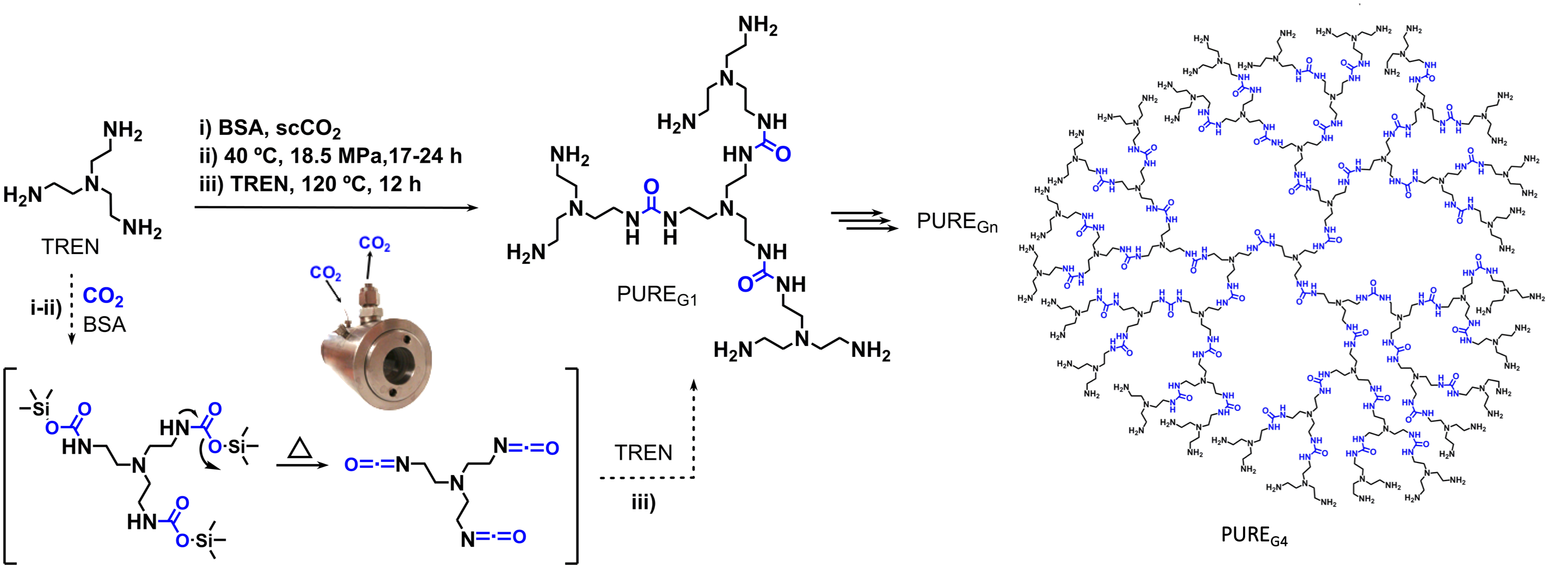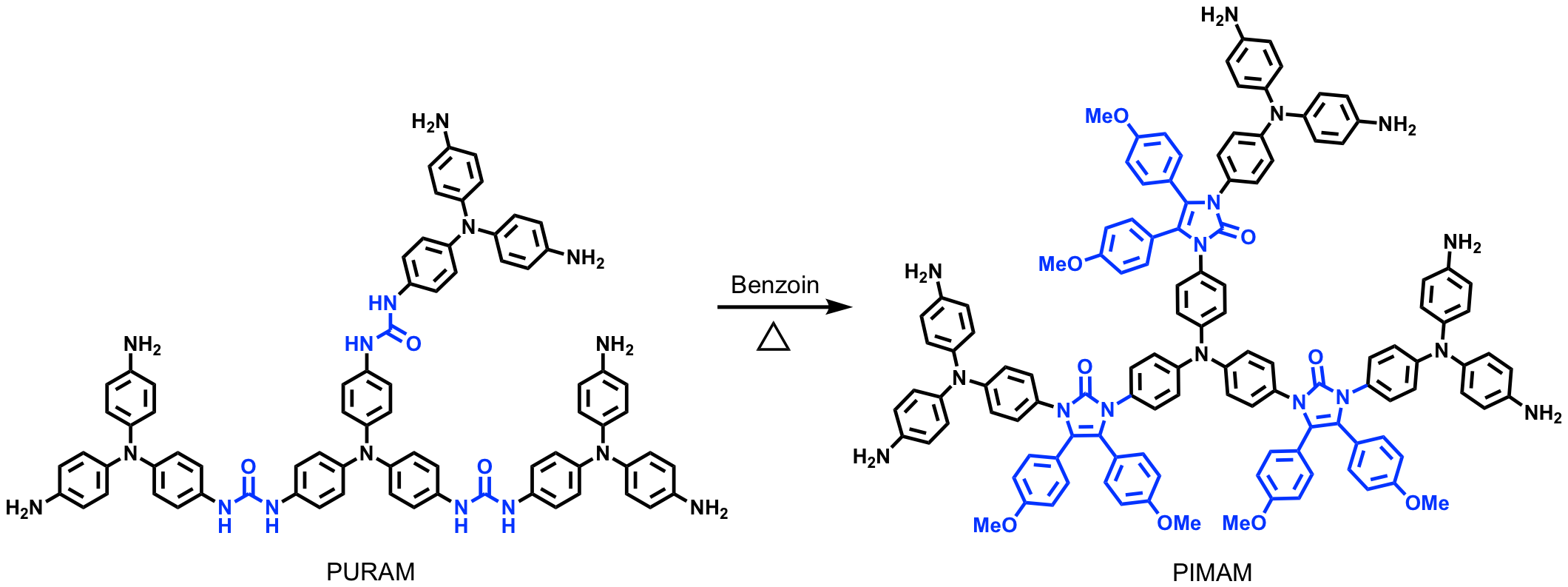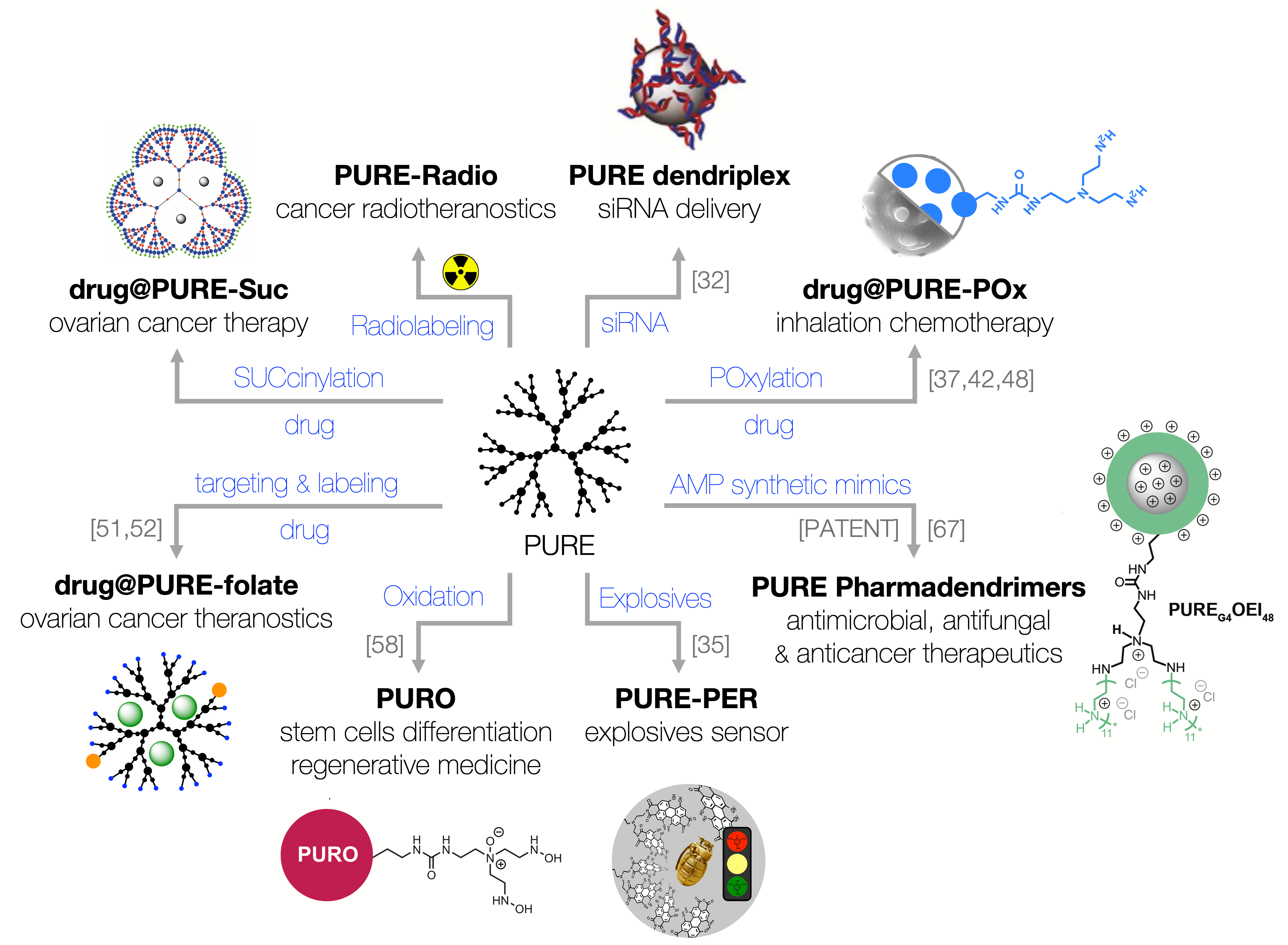Dr. Vasco Bonifácio pioneered the sustainable synthesis of dendrimers. In 2008, under the project Just in time dendrimers he designed a new class of dendrimers. The synthesis of polyurea (PURE) dendrimers was first published in 2012 (Angew. Chem. Int. Ed. 2012, 51, 5162). PURE dendrimers are water-soluble, biocompatible, non-cytotoxic, non-hemolytic and present an unusual pH-dependent blue non-traditional intrinsic luminescence (NTIL). PURE dendrimers are structurally similar to PAMAM dendrimers (pioneered by Prof. Tomalia in 1985), differing in the backbone functional groups, were amides (NH-CO) are replaced by ureas (NH-CO-NH). The simple incorporation of urea groups confer them new properties (e.g. reduced toxicity, no haemolytic activity, high fluorescence) and functionalization opportunities (e.g. urea chemistry). The synthesis of PURE dendrimers follows an isocyanate-free, divergent step-wise polymerization [A3+B3 strategy] (Kirk-Othmer Encyclopedia of Chemical Technology, 1, 2017), in supercritical carbon dioxide, using carbon dioxide as solvent and as a carbon source (C1-feed stock) (Figure 1).

Figure 1. Green synthesis and chemical structure of a PUREG4 dendrimer.
Biodendrimers are currently undergoing a transition to clinics and are expected to soon make part of our day life, both as formulations for drug/gene delivery, or as novel polymer therapeutics, with intrinsic antimicrobial, antifungal or anticancer activity. In May 2019, Vivagel®, a non-antibiotic therapy for bacterial vaginosis using SPL7013 (astodrimer sodium, polylysine dendrimer), was the first FDA approved dendrimer-based formulation (US$1 billion global market annually). More recently, SPL7013 showed also significant activity against SARS-CoV-2 (coronavirus), which led to the formulation of VIRALEZE™. Since its discovery PURE dendrimers have been investigated in many different applications, especially in the field of Nanomedicine, and are expected to strongly contribute to the advance of many fields of science (Scheme 1). Recently, we disclosed antimicrobial pharmadendrimers as a novel class of polymer therapeutics (Portuguese patent, international patent pending).
Another challenging and emergent application of PURE dendrimers is bioenergy capture and storage. Playing with urea chemistry, we converted aromatic poly(urea amidoamidine) (PURAM) dendrimers into poly(imidazolone amine) (PIMAM) donor-acceptor dendrimers that show a photodiode-like behaviour (Scheme 2). Also, by rational design other similar derivatives are being investigated as supercapitor electrodes for microbial fuel cells.

Scheme 2. Biodendrimers for bioenergy harvesting and storage.
